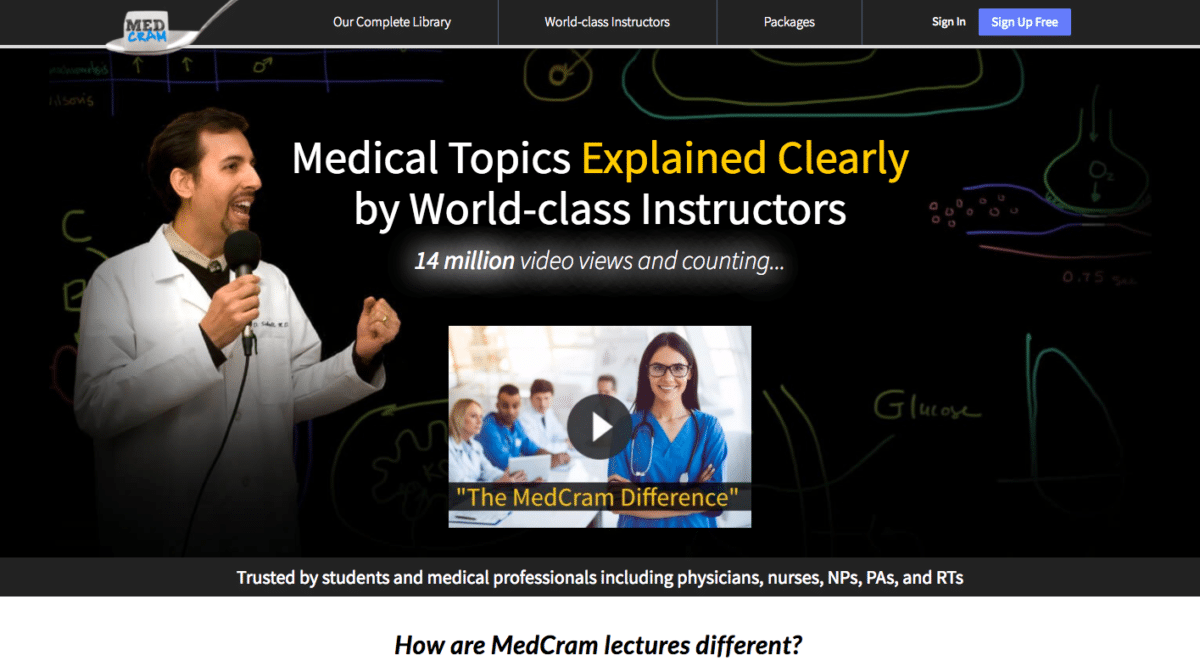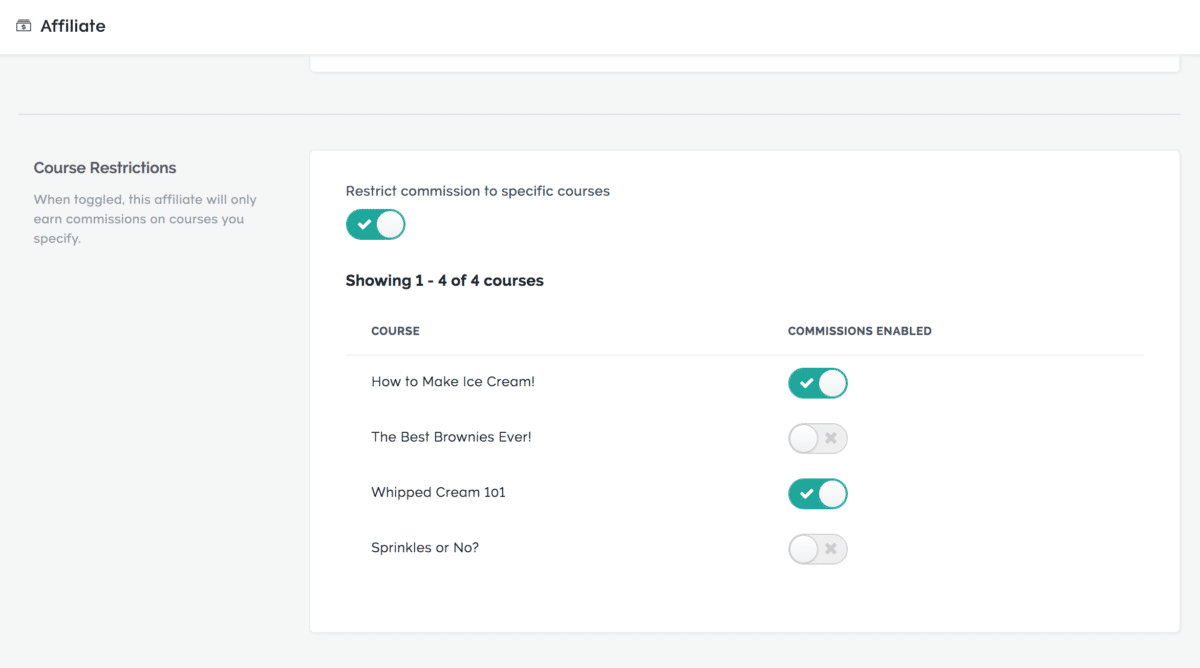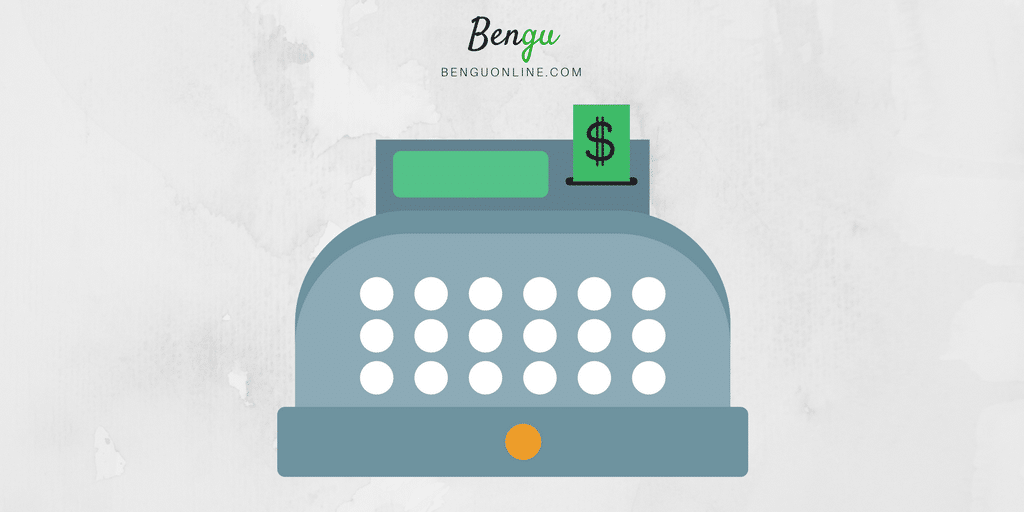Teachable and Thinkific are online platforms designed to host courses.
If you have knowledge to share and want to help solve problems for other people, these platforms provide a great non-technical solution.
On both platforms, you can build your own courses and market them to students globally all on the same website.
Teachable and Thinkific are similar platforms, and we set out to discover which one is the best.
When the two platforms go head to head, only one can come out on top. We took an in-depth look at both options and determined a clear winner!
Here are the ten reasons why (in our opinion) Teachable slams Thinkific for course creation:
1. Teachable Has Better Finance Tools

Most people set out to create and sell online courses for many reasons — to make money, create streams of passive income and achieve sweet financial freedom.
Sharing knowledge is fulfilling, but we also have to pay the bills.
Teachable understands that, and their smart finance tools reflect it.
Teachable takes care of the VAT
For the non-Europeans out there, VAT stands for “value-added tax”, and it’s applied to most sales in the European Union.
No matter where your course is created, if you sell it to a student in the EU, they’ll need to pay an extra VAT fee.
Teachable automatically applies this during the sale and collects it upon purchase, so you don’t have to give this pesky tax another thought.
Unfortunately, Thinkific doesn’t offer this feature.
The company has no way to automate the VAT collection for EU students who purchase your course, so you’ll be left pulling it from your revenue and trying to understand where to send it on your own!
Urgh!
Teachable Payments in Multiple Currencies
Pounds, dollars, euros, and more are all supported on Teachable.
Even better, students can buy the same course in different currencies, with the amount listed for each directly on the check-out page.
On Thinkific, only one currency is supported at a time.
This causes a problem when you’re marketing to students around the world as not being able to buy in your local currency can be a major turn-off.
2. Teachable Pages Are Easier to Build
Online, it’s what’s on the outside that counts. The truth is, your landing page HAS to stand out and grab attention fast, or you’ll struggle to make sales.
Teachable’s landing pages look a lot more polished and professional compared to Thinkific.
Here’s a couple of Teachable landing page examples:


And a couple from Thinkific:


Even with zero web design or coding experience, Teachable makes building your landing pages super simple.
All you have to do is use the drag-and-drop builder to get all of your pages looking clean, crisp and gorgeous.
Thinkific also has this capability, but only allows the drag-and-drop building when creating courses. So it’s not available on the homepage or checkout pages, where the design still depends heavily on coding.
This makes it harder for the average user to achieve the congruent look they need throughout their course pages.
While it’s certainly possible to build beautiful pages with Thinkific, Teachable just makes it way easier for the average person to create amazing course pages from scratch.
Related: Clickfunnels VS Leadpages – A Side-By-Side Dissection3. Teachable Offers Superior Marketing Tools

The goal of course creation is to convert interested prospects into paying customers — and Teachable helps you sell more courses through clever marketing features.
1-Click Upsells
While both Teachable and Thinkific allow 1-click upsells to students, the former does a much better job.
As mentioned earlier, Teachable provides more freedom with their drag-and-drop builder, which means your upsell pages can be customized with things like video while the one on Thinkific cannot.
Easy Affiliate Marketing
Affiliate marketing is a powerful sales tool when it’s done right.
In fact, this report found that “16% of all online orders are generated through affiliate marketing.”
Chances are, you’ll be interested in exploring this tool as your online courses take off.
So, who does it better?
After comparison, it’s clear that the affiliate marketing program from Teachable is superior to the one on offer from Thinkific.
The Teachable affiliate feature offers more customisation options for affiliate course access.
For example:
You can restrict the commissions of an affiliate to a specific course:

And view the performance of individual affiliates:

These are things you cannot do with Thinkific.
4. The 1-Step Checkout Process From Teachable

Another area where Teachable SLAMS Thinkific is on the checkout page.
Teachable has a 1-step checkout page, which can help you make more sales.
A recent study found that “28% of US online shoppers have abandoned an order in the past quarter solely due to a too long/complicated checkout process.”
One major flaw with the Thinkific platform is their two-step checkout process.
First, they ask customers to create an account and only then is it possible to purchase the course. That gives customers more time to contemplate their purchase and more time to change their minds!
On Teachable, it’s the other way around.
Customers complete the transaction before they’re prompted to fill in the information for their account. It’s a small difference that can lead to significant changes in revenue.
5. Teachable is More Mobile Friendly

It may be shocking to read, but even in 2019 a major online company like Thinkific still doesn’t have an app!
The Teachable app makes it easy for students to browse, buy, and even complete their courses entirely from their smartphones.
The fact that Teachable has an app can also help you make more sales.
Even though Thinkific has a mobile-friendly website, the Teachable app will be more effective at getting your course in front of mobile users who want to buy your content.
6. Teachable has a Built-In Blog, Thinkific Doesn’t

If you want to make more sales for your online course (who doesn’t?) then blogging matters. A lot.
Content creation is at the forefront of many marketing strategies in 2019, and for good reason — it works.
While starting a blog from scratch can be daunting, blogging statistics prove the long-term ROI from using this strategy.
Blogging is important for many different marketing aspects. First, if you create valuable content that’s promoted effectively, your blog can become a powerful tool for sending traffic to your Teachable courses.
Moreover, sharing helpful information online for free can help establish you as an authority in your field and help you win the trust of prospects that read your content.
And you can even blog from within Teachable itself.
Related: Building a blog from scratch is tough. Finding the right platform to use can be mind-boggling, so we created this review guide comparing two popular blog builders — Squarespace vs WordPress.
7. Teachable is Experiencing Faster Growth than Thinkific

Teachable may be the new kid on the block but they’re growing at a faster rate than Thinkific.
In 2017, the founder of Teachable, Ankur Nagpal, laid out a transparent look at their growth trajectory and reported that they were one of the fastest-growing companies in New York.
Currently, the Teachable website boasts over 7 million active students and 34,000 active courses.
The rapid growth shows how committed the company is to consistently improve the online course creation experience.
Whether you’re an eager student or a budding entrepreneur looking to make your first few course sales, Teachable is a solid choice.
On the other hand, while Thinkific does report some serious numbers (like 25,000 active businesses and course creators, and availability in 164 countries) they are not expanding at the same rate as Teachable at this point.
While both companies have a bright future, the strides that Teachable has been making recently are a testament to the quality of the tool.
8. Teachable Courses are More Engaging
You’ve gone through all the work to create your course, and now you want others to learn from it. That means the user experience for students is an important factor when choosing which option is best for you.
In this category, Teachable beats Thinkific again!
Here’s why:
Course Layout
The course layout on Teachable is preferable because it looks more professional.
For students, that helps create the right tone for a classroom setting. For course creators, it’s easier to navigate, customize, and stay in control no matter how much content you’re running.
App Usage
Although this was already touched on earlier, it plays such an important role in keeping students engaged that it deserves a second mention.
The app allows students to access their courses on the go and is a valuable asset that Thinkific lacks.
Comment Section
Both Teachable and Thinkific have comment sections for student discussion, but Teachable keeps it better organized. You can embed discussions into each lecture so that conversations and questions for each topic are kept separate and organized.
On Thinkific, there is one comment section to cover the whole course, and it can’t be segmented on to different pages for different topics. This allows conversations get muddled, and makes it harder for students to find the help they’re looking for.
9. Teachable Checkout Pages are Fully Customizable

You worked hard on your content, but if no one is buying it, your course will never be seen. That’s why we come back again and again to the checkout page.
The checkout page is one of the most important aspects of the sales flow, and if it’s not done right, it can lead to a lot of abandoned sales and lost revenue.
So anyone considering course creation software should take a detailed look at checkout page features.
Teachable lets you add testimonials to your checkout page, while Thinkific does not. While this may seem like a small difference, it can have a serious effect on sales.
72% of customers say that “positive reviews and testimonials make them trust a business more”
Now with Teachable, you can apply this positive feeling right on the checkout page to help convince your customers to buy!
10. Tag Along With the Experts

Teachable is trusted by globally recognised companies such as The New York Times, Shopify, and even Penn Law.
Teachable is also well-known in the entrepreneurial world and is used by a wide range of famous creators — from authors like Ryan Holiday to bloggers like Pat Flynn and Melyssa Griffin.
It’s a platform that’s widely endorsed by people all over the interwebs — and for good reason!
Knowing the tool is not just endorsed but actually used by many successful business owners is very encouraging.
Bringing it all together
It’s clear that Teachable beats Thinkific when it comes to course creation software.
Both platforms are similar in cost, security, and customer support but there’s a lot more to the course creation than meets the eye.
Whether you’re a new entrepreneur ready to hit the ground running, or a seasoned vet branching into something new, Teachable makes course creation simple and straight-forward.
Everyone can appreciate the variety of finance and marketing tools that Teachable has on offer, as well as the one-step checkout process to increase conversions.
Additionally, Teachable is easier to customize, the courses are more student-friendly, and it even offers an app to keep mobile users (a huge market!) more engaged.
So, which website will you choose? For me, it’s a no-brainer!

This article was written by Dianne Minardi. Dianne is a freelance writer, digital marketer, and avid traveller. Keep up with her latest adventures, explore the ups and downs of full-time life on the road, and learn how to find work abroad on her blog at Slight North.

I’m a London-born lover of technology, obsessed with online business, passive income and the digital economy. I love learning, researching and curating the most valuable resources to save you time, money and help you discover the truth on what it actually takes to achieve your goals.

Does teachable have an app on android phones? I think it only has one that can be used on iPhones. I can’t find it in the play store.
Thinkific offers an expensive pricing plan than Teachable. Well, it’s worth it, but if you are strictly looking at a price companion, then you must go with Teachable.
If you are not good at marketing nobody will buy your course – A significant drawback. Thinkific offers excellent marketing tools, promotions, and offers to help increase your sales.
Well, if you love more customizations, than obviously, Thinkific templates are more amazing than Teachable.
For useful custom landing pages, Teachable wins the show, and for smart integrations, Thinkific is out of the box.